6. Trees¶
When we see a tree in our everyday lives the roots are generally in the ground and the leaves are up in the air. The branches of a tree spread out from the roots in a more or less organized fashion. The word tree is used in Computer Science when talking about a way data may be organized. Trees have some similarilties to the linked list organization found in chapter 4. In a tree there are nodes which have links to other nodes. In a linked list each node has one link, to the next node in the list. In a tree each node may have two or more links to other nodes. A tree is not a sequential data structure. It is organized like a tree, except the root is at the top of tree data structures and the leaves are at the bottom. A tree in computer science is usually drawn inverted when compared to the trees we see in nature. There are many uses for trees in computer science.
In this chapter we’ll explore trees and when it makes sense to build and or use a tree in a program. Not every program will need a tree data structure. Nevertheless, trees are used in many types of programs. A knowledge of them is not only a necessity, proper use of them can greatly simplify some types of programs.
6.1. Abstract Syntax Trees¶
You can download prefix expression parser and abstract syntax tree code here. You must have access to the queue code from chapter 4 to run this program.
1import queue
2
3class TimesNode:
4 def __init__(self, left, right):
5 self.left = left
6 self.right = right
7
8 def eval(self):
9 return self.left.eval() * self.right.eval()
10
11 def inorder(self):
12 return "(" + self.left.inorder() + " * " + self.right.inorder() + ")"
13
14class PlusNode:
15 def __init__(self, left, right):
16 self.left = left
17 self.right = right
18
19 def eval(self):
20 return self.left.eval() + self.right.eval()
21
22
23 def inorder(self):
24 return "(" + self.left.inorder() + " + " + self.right.inorder() + ")"
25
26class NumNode:
27 def __init__(self, num):
28 self.num = num
29
30 def eval(self):
31 return self.num
32
33 def inorder(self):
34 return str(self.num)
35
36def E(q):
37 if q.isEmpty():
38 raise ValueError("Invalid Prefix Expression")
39
40 token = q.dequeue()
41
42 if token == "+":
43 return PlusNode(E(q),E(q))
44
45 if token == "*":
46 return TimesNode(E(q),E(q))
47
48 return NumNode(float(token))
49
50def main():
51 x = NumNode(5)
52 y = NumNode(4)
53 p = PlusNode(x,y)
54 t = TimesNode(p, NumNode(6))
55 root = PlusNode(t, NumNode(3))
56
57 print(root.eval())
58 print(root.inorder())
59
60 x = input("Please enter a prefix expression: ")
61
62 lst = x.split()
63 q = queue.Queue()
64
65 for token in lst:
66 q.enqueue(token)
67
68 root = E(q)
69
70 print(root.eval())
71 print(root.inorder())
72
73
74
75if __name__ == "__main__":
76 main()
77
6.2. Binary Search Trees¶
You can download binary search tree code here.
1class BinarySearchTree:
2 # This is a Node class that is internal to the BinarySearchTree class.
3 class Node:
4 def __init__(self,val,left=None,right=None):
5 self.val = val
6 self.left = left
7 self.right = right
8
9 def getVal(self):
10 return self.val
11
12 def setVal(self,newval):
13 self.val = newval
14
15 def getLeft(self):
16 return self.left
17
18 def getRight(self):
19 return self.right
20
21 def setLeft(self,newleft):
22 self.left = newleft
23
24 def setRight(self,newright):
25 self.right = newright
26
27 # This method deserves a little explanation. It does an inorder traversal
28 # of the nodes of the tree yielding all the values. In this way, we get
29 # the values in ascending order.
30 def __iter__(self):
31 if self.left != None:
32 for elem in self.left:
33 yield elem
34
35 yield self.val
36
37 if self.right != None:
38 for elem in self.right:
39 yield elem
40
41 def __repr__(self):
42 return "BinarySearchTree.Node(" + repr(self.val) + "," + repr(self.left) + "," + repr(self.right) + ")"
43
44 # Below are the methods of the BinarySearchTree class.
45 def __init__(self, root=None):
46 self.root = root
47
48 def insert(self,val):
49 self.root = BinarySearchTree.__insert(self.root,val)
50
51 def __insert(root,val):
52 if root == None:
53 return BinarySearchTree.Node(val)
54
55 if val < root.getVal():
56 root.setLeft(BinarySearchTree.__insert(root.getLeft(),val))
57 else:
58 root.setRight(BinarySearchTree.__insert(root.getRight(),val))
59
60 return root
61
62 def __iter__(self):
63 if self.root != None:
64 return iter(self.root)
65 else:
66 return iter([])
67
68 def __str__(self):
69 return "BinarySearchTree(" + repr(self.root) + ")"
70
71def main():
72 s = input("Enter a list of numbers: ")
73 lst = s.split()
74
75 tree = BinarySearchTree()
76
77 for x in lst:
78 tree.insert(float(x))
79
80 for x in tree:
81 print(x)
82
83if __name__ == "__main__":
84 main()
6.3. Sudoku Test Files¶
Here are two more sudoku test files. These can be solved if you implement the depth first search as described in chapter 6 of the text.
6.4. OrderedTreeSet¶
Here is an OrderedTreeSet implementation to get you started with the ordered tree set implementation. This file has an OrderedTreeSet class with a BinarySearchTree class nested inside it.
1import random 2 3class OrderedTreeSet: 4 class BinarySearchTree: 5 # This is a Node class that is internal to the BinarySearchTree class. 6 class Node: 7 def __init__(self,val,left=None,right=None): 8 self.val = val 9 self.left = left 10 self.right = right 11 12 def getVal(self): 13 return self.val 14 15 def setVal(self,newval): 16 self.val = newval 17 18 def getLeft(self): 19 return self.left 20 21 def getRight(self): 22 return self.right 23 24 def setLeft(self,newleft): 25 self.left = newleft 26 27 def setRight(self,newright): 28 self.right = newright 29 30 # This method deserves a little explanation. It does an inorder traversal 31 # of the nodes of the tree yielding all the values. In this way, we get 32 # the values in ascending order. 33 def __iter__(self): 34 if self.left != None: 35 for elem in self.left: 36 yield elem 37 38 yield self.val 39 40 if self.right != None: 41 for elem in self.right: 42 yield elem 43 44 def __repr__(self): 45 return "BinarySearchTree.Node(" + repr(self.val) + "," + repr(self.left) + "," + repr(self.right) + ")" 46 47 # Below are the methods of the BinarySearchTree class. 48 def __init__(self, root=None): 49 self.root = root 50 51 def insert(self,val): 52 self.root = OrderedTreeSet.BinarySearchTree.__insert(self.root,val) 53 54 def __insert(root,val): 55 if root == None: 56 return OrderedTreeSet.BinarySearchTree.Node(val) 57 58 if val < root.getVal(): 59 root.setLeft(OrderedTreeSet.BinarySearchTree.__insert(root.getLeft(),val)) 60 else: 61 root.setRight(OrderedTreeSet.BinarySearchTree.__insert(root.getRight(),val)) 62 63 return root 64 65 def __iter__(self): 66 if self.root != None: 67 return iter(self.root) 68 else: 69 return iter([]) 70 71 def __str__(self): 72 return "BinarySearchTree(" + repr(self.root) + ")" 73 74 def __init__(self,contents=None): 75 self.tree = OrderedTreeSet.BinarySearchTree() 76 if contents != None: 77 # randomize the list 78 indices = list(range(len(contents))) 79 random.shuffle(indices) 80 81 for i in range(len(contents)): 82 self.tree.insert(contents[indices[i]]) 83 84 self.numItems = len(contents) 85 else: 86 self.numItems = 0 87 88 def __str__(self): 89 pass 90 91 def __iter__(self): 92 return iter(self.tree) 93 94 # Following are the mutator set methods 95 def add(self, item): 96 pass 97 98 def remove(self, item): 99 pass 100 101 def discard(self, item): 102 pass 103 104 def pop(self): 105 pass 106 107 def clear(self): 108 pass 109 110 def update(self, other): 111 pass 112 113 def intersection_update(self, other): 114 pass 115 116 def difference_update(self, other): 117 pass 118 119 def symmetric_difference_update(self, other): 120 pass 121 122 # Following are the accessor methods for the HashSet 123 def __len__(self): 124 pass 125 126 def __contains__(self, item): 127 pass 128 129 # One extra method for use with the HashMap class. This method is not needed in the 130 # HashSet implementation, but it is used by the HashMap implementation. 131 def __getitem__(self, item): 132 pass 133 134 def not__contains__(self, item): 135 pass 136 137 def isdisjoint(self, other): 138 pass 139 140 141 def issubset(self, other): 142 pass 143 144 145 def issuperset(self, other): 146 pass 147 148 def union(self, other): 149 pass 150 151 def intersection(self, other): 152 pass 153 #done 154 def difference(self, other): 155 pass 156 157 def symmetric_difference(self, other): 158 pass 159 160 def copy(self): 161 pass 162 163 # Operator Definitions 164 def __or__(self, other): 165 pass 166 167 def __and__(self,other): 168 pass 169 170 def __sub__(self,other): 171 pass 172 173 def __xor__(self,other): 174 pass 175 176 def __ior__(self,other): 177 pass 178 179 def __iand__(self,other): 180 pass 181 182 def __ixor(self,other): 183 pass 184 185 def __le__(self,other): 186 pass 187 188 def __lt__(self,other): 189 pass 190 191 def __ge__(self,other): 192 pass 193 194 def __gt__(self,other): 195 pass 196 197 def __eq__(self,other): 198 pass 199 200 201 202 203def main(): 204 s = input("Enter a list of numbers: ") 205 lst = s.split() 206 207 tree = OrderedTreeSet() 208 209 for x in lst: 210 tree.add(float(x)) 211 212 for x in tree: 213 print(x) 214 215if __name__ == "__main__": 216 main()
6.5. OrderedTreeSet Test Program¶
Here is an OrderedTreeSet Test Program that provides some tests for the OrderedTreeSet implementation. Your ordered tree set must be saved in a file called orderedtreeset.py so it can be imported into this test program.
1import orderedtreeset 2 3def main(): 4 s = orderedtreeset.OrderedTreeSet(list(range(100))) 5 6 t = orderedtreeset.OrderedTreeSet(list(range(10,20))) 7 8 u = orderedtreeset.OrderedTreeSet(list(range(10,20))) 9 10 if len(t) == len(u) and len(t) == 10: 11 print("Test 1 Passed") 12 else: 13 print("Test 1 Failed") 14 15 s.intersection_update(t) 16 17 if len(s) == 10: 18 print("Test 2 Passed") 19 else: 20 print("Test 2 Failed") 21 22 s = orderedtreeset.OrderedTreeSet(list(range(100))) 23 24 t.update(s) 25 26 if len(s) == len(t): 27 print("Test 3 Passed") 28 else: 29 print("Test 3 Failed") 30 31 t.clear() 32 t.update(u) 33 34 if len(t) == len(u): 35 print("Test 4 Passed") 36 else: 37 print("Test 4 Failed") 38 39 s.difference_update(t) 40 41 test5Passed = True 42 test6Passed = True 43 44 for x in range(1,10): 45 if x in s: 46 pass 47 else: 48 test5Passed = False 49 print("Test 5 Failed on",x) 50 51 if x not in s: 52 test6Passed = False 53 print("Test 6 Failed on",x) 54 55 if test5Passed: 56 print("Test 5 Passed") 57 58 if test6Passed: 59 print("Test 6 Passed") 60 61 62 test7Passed = True 63 test8Passed = True 64 65 for x in range(20,100): 66 if x in s: 67 pass 68 else: 69 test7Passed = False 70 print("Test 7 Failed on",x) 71 72 if x not in s: 73 test8Passed = False 74 print("Test 8 Failed on",x) 75 76 if test7Passed: 77 print("Test 7 Passed") 78 79 if test8Passed: 80 print("Test 8 Passed") 81 82 x = orderedtreeset.OrderedTreeSet(["a","b","c","d","e","f","g","h","i","j","k"]) 83 84 y = orderedtreeset.OrderedTreeSet(["c","d","e","l","m","n"]) 85 86 z = x.difference(y) 87 88 if len(z) == 8: 89 print("Test 9 Passed") 90 else: 91 print("Test 9 Failed") 92 93 test10Passed = True 94 95 for item in z: 96 if item not in ["a","b","f","g","h","i","j","k"]: 97 test10Passed = False 98 print("Test 10 Failed on", x) 99 100 if test10Passed: 101 print("Test 10 Passed") 102 103 if z.issubset(x): 104 print("Test 11 Passed") 105 else: 106 print("Test 11 Failed") 107 108 if x.issuperset(z): 109 print("Test 12 Passed") 110 else: 111 print("Test 12 Failed") 112 113 if z == y: 114 print("Test 13 Failed") 115 else: 116 print("Test 13 Passed") 117 118 if z == z: 119 print("Test 14 Passed") 120 else: 121 print("Test 14 Failed") 122 123 r = z.copy() 124 125 if r == z: 126 print("Test 15 Passed") 127 else: 128 print("Test 15 Failed") 129 130 z = orderedtreeset.OrderedTreeSet(list(range(50))) 131 132 for item in range(50): 133 z.discard(item) 134 135 if len(z) == 0: 136 print("Test 16 Passed") 137 else: 138 print("Test 16 Failed") 139 140 z = orderedtreeset.OrderedTreeSet(list(range(50))) 141 142 lastItem = -99999999999999999999999999999 143 test17Passed = True 144 145 for item in z: 146 if lastItem >= item: 147 print("Test 17 Failed with ", lastItem, "and", item, "out of order.") 148 test17Passed = False 149 150 lastItem = item 151 152 if test17Passed: 153 print("Test 17 Passed") 154 155 for item in range(25): 156 z.remove(item) 157 158 lastItem = -99999999999999999999999999999 159 test18Passed = True 160 161 for item in z: 162 if lastItem >= item: 163 print("Test 18 Failed with ", lastItem, "and", item, "out of order.") 164 test18Passed = False 165 166 lastItem = item 167 168 if test18Passed: 169 print("Test 18 Passed") 170 171 if len(z) == 25: 172 print("Test 19 Passed") 173 else: 174 print("Test 19 Failed") 175 176 177if __name__ == "__main__": 178 main() 179
6.6. Figures from Text¶

Fig. 1: The Call Tree for Computing Fib(5)¶

Fig. 2: The AST for (5 + 4) * 6 + 3¶

Fig. 3: An empty BinarySearchTree object¶
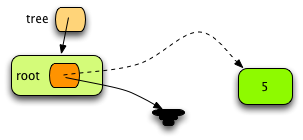
Fig. 4: The Tree After Inserting 5¶
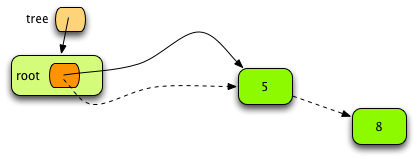
Fig. 5: The Tree After Inserting 8¶
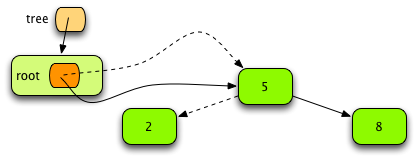
Fig. 6: The Tree After Inserting 2¶
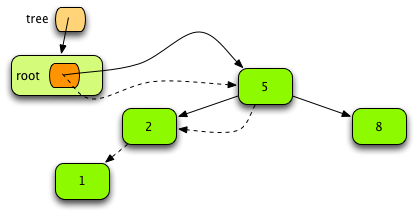
Fig. 7: The Tree After Inserting 1¶

Fig. 8: The Tree After Inserting 4¶
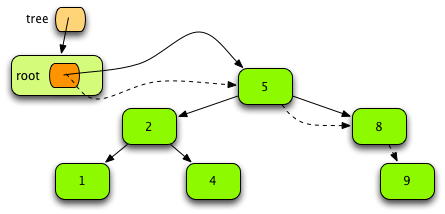
Fig. 9: The Tree After Inserting 9¶
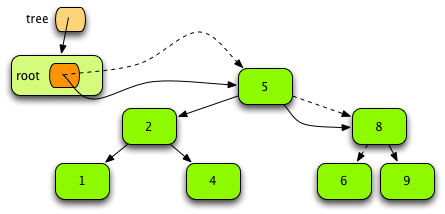
Fig. 10: The Tree After Inserting 6¶
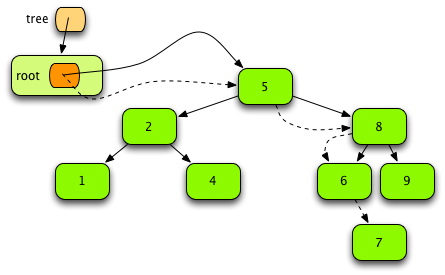
Fig. 11: The Tree After Inserting 7¶
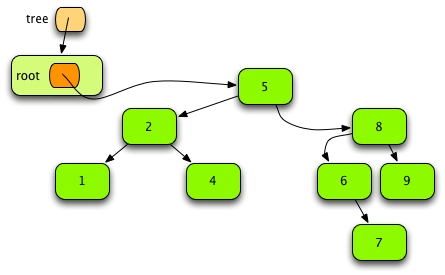
Fig. 12: The Final BinarySearchTree Contents¶
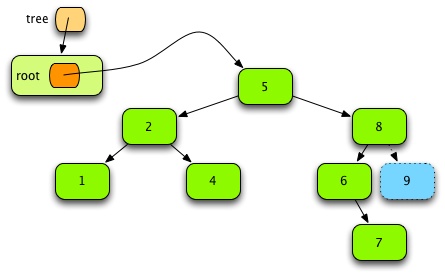
Fig. 13: The Tree After Deleting 9¶
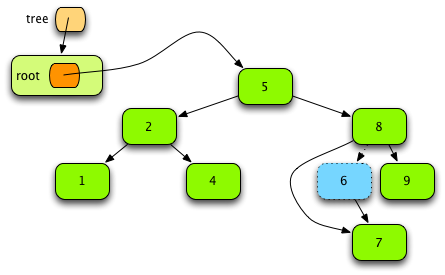
Fig. 14: The Tree After Deleting 6¶

Fig. 15: The Tree After Deleting 5¶